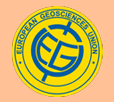Scientific motivation
BACKGROUND
The research on high-energy phenomena in thunderclouds is entering an intensive development stage. New satellite and balloon missions are being prepared exclusively for the detection of optical, radio, and gamma ray emissions from thunderclouds. New research groups from several countries worldwide are installing surface-based particle detectors for TGE detection. New models aimed to explain TGF and TGE events are currently being developed and tested. A vast amount of experimental evidence on TGE and TGF is available for tuning the models and for consistency checks on individual observations. The spatial and energetic characteristics of extensive cloud showers and the measured energy spectra of the TGE gamma rays and electrons may be used for checking characteristics of the particle fluxes obtained by the TGF simulations.
The study of high-energy phenomena in the atmosphere provides unique information about particle acceleration and multiplication in the lower and upper atmosphere during thunderstorms. Generation and propagation of large fluxes of electrons, positrons, gammas, and neutrons in the atmosphere and in near space are related to the development of thunderstorms and may be used for monitoring dangerous consequences of extreme weather. Electromagnetic emissions connected with thunderstorms trigger various dynamic processes in the Earth’s magnetosphere, causing global geoeffects and changing electrodynamics properties of the ionosphere. The large fluences of energetic electrons, photons, and neutrons produced by runaway electron avalanches can potentially be a danger to aircraft crews, passengers, and onboard electronic systems.
STRUCTURE OF THE SYMPOSIUM
We anticipate following sessions:
- Research of the Thunderstorm ground enhancements (TGEs)
- Research of the Terrestrial gamma-ray flashes (TGF)
- Atmospheric High-energy phenomena observations by space- born facilities
- Instrumentation
We plan as well discussions on the most intriguing problems of high-energy physics and on possible directions for the advancement in research and collaborative studies.
Following topics will be covered during oral and poster sessions:
- Research of the Thunderstorm ground enhancements (TGEs), measurements of electrons, gamma rays and neutrons by networks of particle detectors located on Earth’s surface;
- Research of the Terrestrial gamma-ray flashes (TGFs) observed by the orbiting gamma-ray observatories;
- Radio emissions produced by atmospheric discharges and particle fluxes;
- Monitoring of thunderclouds from orbit;
- Methods of the remote sensing of the thundercloud structure and electric field;
- Relation of the lightning occurrences to the TGE and TGF initiation;
- X-ray emissions from the lightning;
- Relations to the climate and space weather issues;
- Possibility of joint observations by space-born and ground-based facilities.




